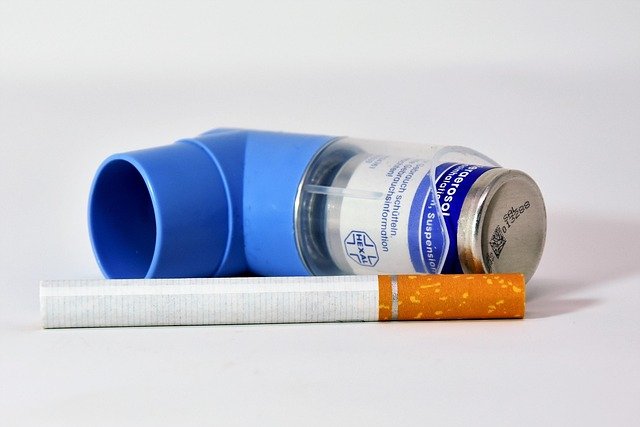Understanding Chronic Obstructive Pulmonary Disease and Precautions
Chronic obstructive pulmonary disease (COPD), often simply referred to as pulmonary obstruction or COPD, is an obstructive lung disease characterized by persistent airflow limitation. Its main symptoms are shortness of breath, cough, and sputum production, which are often mistaken for a cold or asthma; therefore, more than 80% of cases are diagnosed at a moderate to severe stage. COPD is a progressive disease that gradually worsens over time, eventually making even simple daily activities such as walking and dressing difficult.

Chronic Obstructive Pulmonary Disease (COPD) is a progressive respiratory condition characterized by persistent airflow limitation and breathing difficulties. It encompasses emphysema and chronic bronchitis, conditions that cause inflammation, structural changes, and narrowing of the airways. While COPD cannot be cured, various treatment approaches can help manage symptoms, reduce exacerbations, and improve quality of life. This article explores comprehensive COPD management strategies, focusing on non-pharmacological treatments, nursing care, lifestyle modifications, and preventive measures.
Non-Pharmacological Treatments for COPD Management
While medication plays a crucial role in COPD management, non-pharmacological interventions are equally important. Pulmonary rehabilitation stands out as one of the most effective approaches, combining exercise training, education, and behavioral interventions. This comprehensive program typically spans 6-12 weeks and has been shown to improve exercise capacity, reduce dyspnea, and enhance quality of life. Breathing techniques, including pursed-lip breathing and diaphragmatic breathing, help patients manage breathlessness by promoting effective ventilation. Airway clearance techniques such as controlled coughing, chest physiotherapy, and postural drainage can help mobilize secretions. Additionally, energy conservation strategies teach patients how to perform daily activities with minimal oxygen consumption, reducing breathlessness during routine tasks.
Key Nursing Care Points for COPD Patients
Nursing care plays a pivotal role in COPD management, with several key interventions that significantly impact patient outcomes. First, nurses must regularly assess respiratory status, including rate, depth, pattern, and use of accessory muscles. Oxygen therapy administration requires careful monitoring to maintain appropriate saturation levels (typically 88-92%) without causing carbon dioxide retention. Medication management is critical—ensuring proper inhaler technique can dramatically improve drug delivery and effectiveness. Nutritional assessment and support are essential as many COPD patients experience unintended weight loss or malnutrition that can worsen outcomes. Nurses should also provide psychological support, as anxiety and depression commonly co-occur with COPD. Patient education about the disease process, medication adherence, and early recognition of exacerbation signs ensures better self-management. Additionally, nurses coordinate care across healthcare settings, monitor for adverse medication effects, assist with mobility and activities of daily living, and help develop personalized action plans for managing exacerbations.
Benefits of Adequate Hydration for COPD Patients
Proper hydration is often overlooked but plays a significant role in COPD management. For COPD patients, drinking plenty of water helps thin mucus secretions, making them easier to expectorate and reducing the risk of airway obstruction. Well-hydrated airways are less susceptible to irritation and inflammation, potentially decreasing exacerbation frequency. The recommended daily water intake for COPD patients is generally 6-8 glasses (1.5-2 liters), though individual needs may vary based on factors like body weight, climate, and activity level. Some patients may need to adjust their fluid intake based on other medical conditions like heart failure. Beyond plain water, warm beverages like herbal tea can provide additional benefits by soothing irritated airways and promoting mucus clearance. It’s important to note that caffeinated and alcoholic beverages can contribute to dehydration and should be limited. Patients should monitor their hydration status by observing urine color (pale yellow indicates good hydration) and adjusting intake accordingly.
Factors That Trigger COPD Exacerbations
Acute exacerbations—periods of worsening symptoms requiring additional treatment—significantly impact COPD progression and quality of life. Respiratory infections, particularly viral and bacterial, are the most common triggers, accounting for approximately 70% of exacerbations. Environmental factors like air pollution, extreme weather changes, and occupational exposures to dust, chemicals, or fumes can irritate airways and precipitate exacerbations. Smoking and secondhand smoke exposure remain significant risk factors, with each exposure potentially causing immediate airway inflammation. Poor medication adherence, whether due to incorrect inhaler technique or missed doses, leaves patients vulnerable to symptom flare-ups. Allergens such as pollen, mold, and pet dander can trigger inflammatory responses in sensitive individuals. Emotional stress and anxiety may induce hyperventilation and worsen breathlessness. Gastroesophageal reflux disease (GERD) is another common comorbidity that can exacerbate COPD symptoms through microaspiration of stomach contents. Understanding these triggers allows patients and healthcare providers to develop targeted prevention strategies and early intervention plans.
Things COPD Patients Should Avoid
Certain exposures and activities can worsen COPD symptoms and should be avoided when possible. Tobacco smoke in any form—including firsthand, secondhand, and thirdhand smoke—is the most critical exposure to eliminate. Indoor air pollutants like chemical cleaning products, air fresheners, scented candles, and aerosol sprays can irritate airways and should be replaced with fragrance-free alternatives. Outdoor activities during poor air quality days, extreme cold, high humidity, or high pollen counts may need to be limited or avoided entirely. Respiratory irritants in occupational settings should be identified and mitigated through proper ventilation or protective equipment. Certain medications can worsen COPD symptoms, including non-selective beta-blockers, sedatives, and some over-the-counter cold remedies containing antihistamines. Crowded places during cold and flu season increase infection risk and may need to be avoided. High-altitude travel without supplemental oxygen can cause hypoxemia in advanced COPD. Finally, sedentary behavior should be avoided—while rest is important, complete inactivity leads to deconditioning and worsening symptoms over time.
This article is for informational purposes only and should not be considered medical advice. Please consult a qualified healthcare professional for personalized guidance and treatment.



